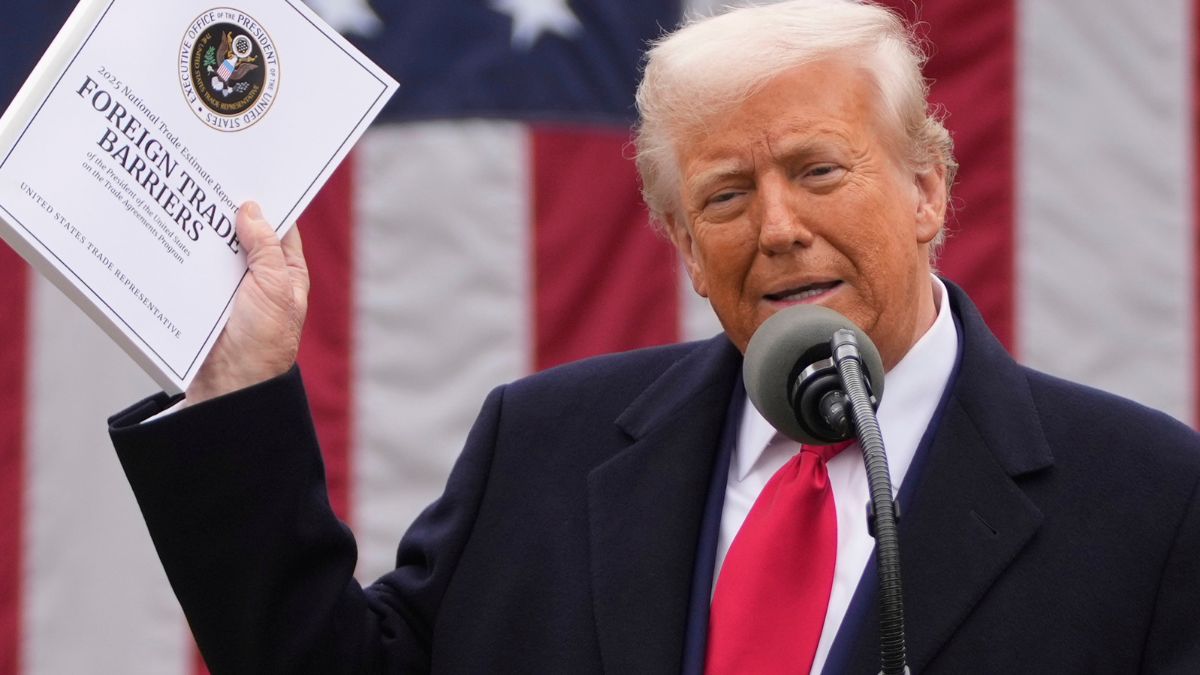On April 2, 2025, President Donald Trump announced a series of sweeping tariffs aimed at addressing what he described as longstanding trade imbalances. This policy introduced a universal 10 per cent tariff on all imports, with significantly higher rates for specific countries.
The tariff on Chinese imports would be 34 per cent, for those from EU– 20 per cent, while imports from China would be 26 per cent.
These tariffs were set to take effect on April 5 for the baseline 10 per cent rate, and on April 9 for the country-specific rates. The administration justified these measures as “reciprocal,” aiming to counteract what it perceives as unfair trade practices by these nations. President Trump asserted that the tariffs would bolster domestic manufacturing and address a reported $1.2 trillion trade deficit from the previous year.
How countries reacted
China: Beijing said it “firmly opposes” the new tariffs on its exports, and vowed “countermeasures to safeguard its own rights and interests”. The tariffs “do not comply with international trade rules”, China’s Commerce Ministry said.
EU: The tariffs are a “major blow to the world economy”, warned EU chief Ursula von der Leyen. She said Brussels was “preparing for further countermeasures” but added it was “not too late to address concerns through negotiations”.
India: India’s commerce ministry reacted cautiously, saying it is “carefully examining the implications of the various measures”. It also said it was “studying the opportunities that may arise due to this new development”, a likely reference to regional competitors being hit harder.
Germany: German Chancellor Olaf Scholz slammed the tariffs as “fundamentally wrong” as Berlin warned that the European Union could retaliate by targeting American tech titans.
What experts fear
Economists and business leaders expressed concerns that these tariffs could lead to:
Increased consumer prices: Higher import costs may be passed on to consumers, leading to inflationary pressures.
Supply chain disruptions: Companies reliant on global supply chains might face increased costs and logistical challenges.
Potential for a global recession: Escalating trade tensions and retaliatory measures could dampen global economic growth.
How markets reacted
The announcement had immediate and significant effects on global financial markets:
US markets: Futures tracking the S&P 500 fell 3.33 per cent, Dow futures dropped 2.73 per cent, and Nasdaq 100 e-minis tumbled 3.83 per cent.
Asian markets: Major indices in Asia experienced significant declines. Japan’s Nikkei 225 closed with losses of 2.8 per cent at 34,735.93. Hong Kong’s Hang Seng Index was down 1.5 per cent at 22,849.81, and Shanghai Composite index was down 0.2 per cent at 3,342.01. India’s Sensex saw a modest dip of 0.4 per cent to close at 76,295.36
Investors sought refuge in gold, pushing its price to a record high of $3,139.90 per ounce, marking a nearly 20 per cent rise since the start of the year.


)
)
)
)
)
)
)
)
)



